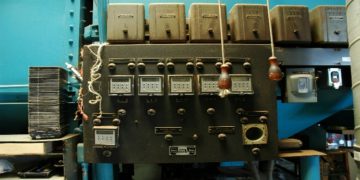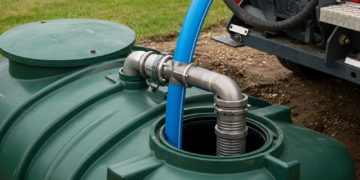Selecting appropriate cattle feed and a dependable supplier represents one of the most critical decisions a farm operator will make. The wrong choice can compromise herd health, reduce productivity, and strain operating budgets. Yet many producers approach this decision without a systematic evaluation process, relying instead on price comparisons or longtime habits. Understanding the key factors that separate exceptional feed programs from mediocre ones requires examining nutritional science, supplier credentials, and long-term farm economics in equal measure.
Understanding Your Livestock’s Nutritional Needs Before Buying Cattle Feed
Cattle feed selection hinges on accurately evaluating the nutritional requirements of the herd, which vary considerably based on factors such as age, weight, production stage, and intended purpose. Growing calves demand higher protein concentrations to support muscle development, typically requiring 14-18% crude protein in their diet. Lactating dairy cows need energy-dense feeds with adequate calcium and phosphorus to sustain milk production, while beef cattle in finishing stages require concentrated energy sources to promote weight gain efficiently.
Producers must also consider the quality of available pasture and existing forage resources when determining supplemental feed needs. Seasonal variations affect nutrient availability from grazing, necessitating adjustments to supplementation programs. Consulting with a livestock nutritionist or veterinarian helps establish precise dietary specifications that optimize animal health, productivity, and economic returns.
Key Qualities to Look for When Selecting High-Quality Cattle Feed
When evaluating cattle feed options, producers should prioritize digestibility as the foremost quality indicator, since nutrients benefit livestock only when effectively absorbed. High-quality feed contains consistent protein levels appropriate for the herd’s production stage and includes recognizable ingredients free from excessive fillers or contaminants. Proper moisture content prevents mold while preserving nutritional value during storage.
Energy density must align with cattle requirements to support efficient weight gain or milk production. Reputable feeds undergo routine testing for mycotoxins and harmful substances, and fresh feed displays natural color and smell without musty odors. Pelleted or processed feeds should also maintain structural integrity without excessive dust or crumbling.
How to Evaluate a Feeds Supplier for Consistency, Reliability, and Safety
Selecting a reputable feed supplier requires examining their track record, certifications, and quality control processes to ensure consistent and safe product delivery. Verify that the supplier holds relevant agricultural certifications and maintains documentation for each batch. Request lab analysis reports detailing nutritional content and testing for contaminants such as mycotoxins and heavy metals. For farms with horses, choosing an experienced equine feeds supplier adds an extra layer of assurance that nutritional formulations meet species-specific requirements.
Evaluate their storage facilities to ensure proper temperature control, pest prevention, and moisture management. Trustworthy suppliers maintain transparent communication regarding ingredient sourcing and formulation changes. Customer reviews and references from similar farms provide additional insight into reliability. A dependable supplier offers technical support, honors return policies, and guarantees product quality while meeting delivery schedules during peak demand.
Comparing Feed Types, Ingredients, and Formulations for Better Farm Productivity
Understanding the differences between feed types helps farmers optimize nutrition and manage costs effectively. Concentrates provide high energy through grains like corn and barley, supporting weight gain and milk production, while roughages such as hay and silage supply essential fiber for proper rumen function. Protein sources range in quality, with soybean meal offering superior amino acids and cottonseed meal serving as a budget-friendly alternative.
Energy-dense additives like molasses increase palatability and caloric intake. Complete feed formulations simplify feeding by balancing all nutrients in predetermined ratios, whereas custom mixes allow tailored nutrition but require more expertise. Pelletized feeds reduce waste and improve intake consistency, though their processing adds to overall cost per ton.
Tips for Budgeting, Storage, and Long-Term Planning for Your Farm’s Feeding Program
Smart feed selection requires a strong financial and logistical plan to support it effectively. Farmers must calculate total feed costs per head, including waste and delivery expenses, and compare these with expected weight gains and market projections. Seasonal budgeting helps anticipate fluctuations in commodity prices and allows for better purchasing decisions.
Proper storage prevents losses from moisture, pests, and spoilage. Covered bins for concentrates, elevated platforms for hay, and climate-controlled storage for supplements all help protect feed quality. Implementing first-in, first-out rotation minimizes deterioration. Long-term planning may include locking in feed prices through forward contracts and maintaining relationships with multiple suppliers to secure consistent supply. Quarterly reviews of feeding performance ensure timely adjustments based on herd health and changing economic conditions.
The Role of Feed Testing and Monitoring in Maintaining Herd Performance
Regular feed testing is essential for maintaining consistent nutrition and preventing health setbacks in your herd. Even high-quality feeds can experience nutrient loss during storage or transport, making periodic laboratory analysis crucial for verifying protein, energy, fiber, and mineral levels. Monitoring feed quality also helps detect early signs of contamination, such as mold growth or mycotoxins, which can significantly impair cattle health and productivity. By routinely testing feeds, farmers protect their investment and avoid unexpected performance declines caused by nutritional imbalances.
Beyond testing, continuous monitoring of herd response ensures that the chosen feed program is delivering expected results. Weight gain, milk yield, body condition scores, and reproduction rates should be evaluated regularly to determine whether dietary adjustments are needed. Tracking these performance indicators over time allows producers to refine feeding strategies, improve efficiency, and maintain profitable operations. Consistent monitoring also strengthens communication with nutritionists and suppliers, creating a proactive approach to herd health management.
Conclusion
Choosing the best cattle feed and a dependable supplier is essential for maintaining herd health, maximizing productivity, and supporting long-term farm profitability. By understanding your livestock’s nutritional needs, selecting high-quality feed ingredients, and partnering with a reliable supplier, you create a foundation for consistent performance and fewer health issues. Comparing feed types, planning for seasonal changes, and monitoring both feed quality and herd results ensure continuous improvement throughout the year. With thoughtful budgeting, proper storage, and routine testing, farmers can build a feeding program that supports sustainable operations and keeps their livestock performing at their best.











































































